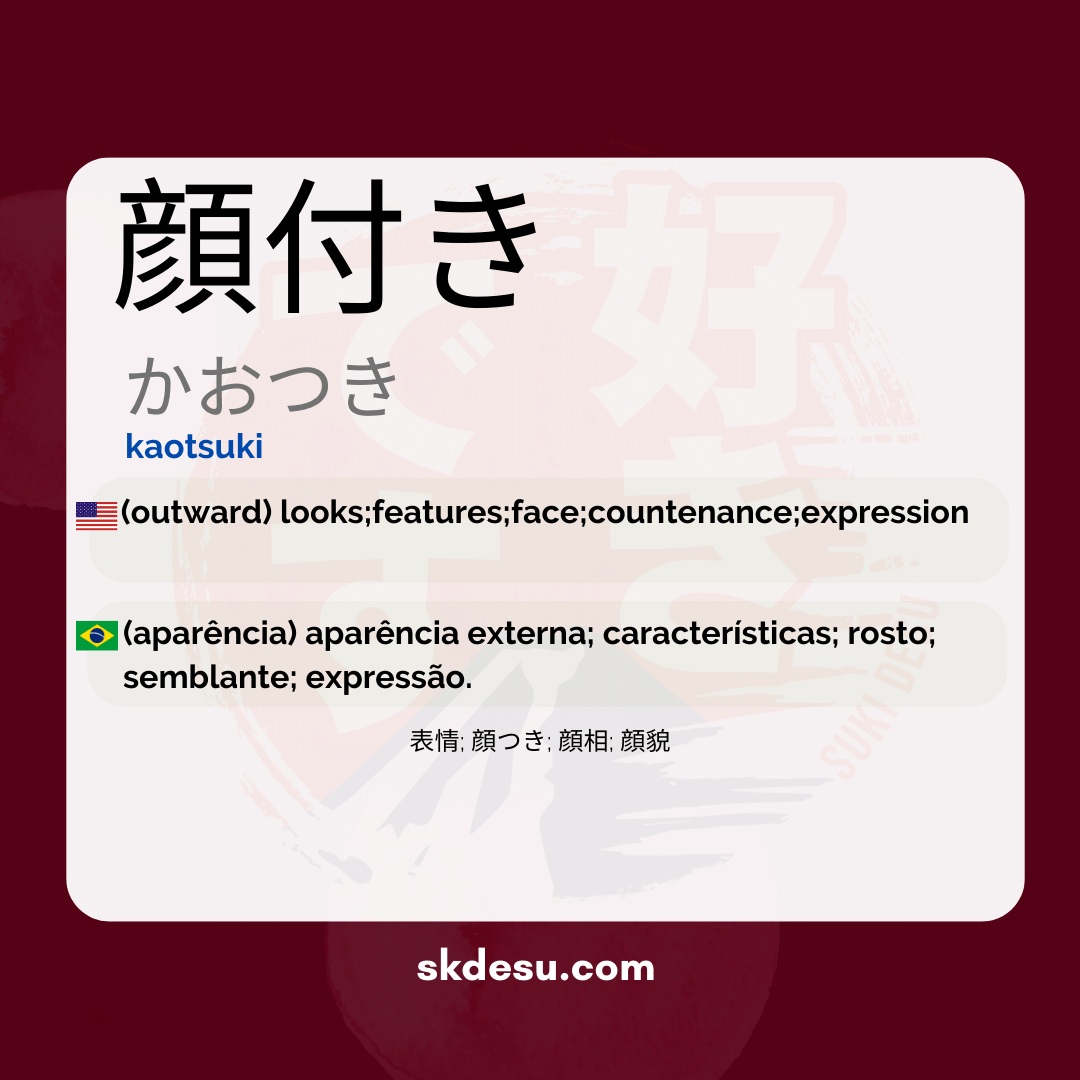Translation and Meaning of: 顔付き - kaotsuki
If you are studying Japanese or have curiosity about expressions that describe human traits, you may have come across the word 顔付き[かおつき]. It is commonly used to describe visual and emotional aspects of the face, but its meaning goes beyond the literal translation. In this article, we will explore what this word represents, its origin, how it is used in the Japanese language, and tips for memorizing it efficiently. Here at Suki Nihongo, our goal is to provide clear and practical explanations for those who want to master the language.
The meaning and use of 顔付き
The word 顔付き is composed of two kanji: 顔 (face) and 付き (appearance, aspect). Together, they form a term that describes not only facial expression but also the impression a person conveys through their face. Unlike simply "face" (顔), 顔付き carries more subjective nuances, such as emotions, personality, or even someone's state of mind.
In daily life, Japanese people use this word to comment on how someone looks. For example, saying "彼は厳しい顔付きをしている" (He has a severe expression) is more natural than just describing physical features. This subtlety makes 顔付き a valuable expression for those who want to communicate precisely in Japanese.
The origin and structure of 顔付き
Analyzing the etymology, 顔付き is formed by the kanji 顔, which was already used in ancient Japanese to refer to the face, and 付き, derived from the verb 付く (tsuku), which means "to adhere" or "to be attached to." This combination suggests that the expression emerged to describe what is "attached to the face" — that is, the appearance it conveys.
It is worth noting that, while 顔付き is a common word, it is not as frequently used as more direct terms like 表情 (hyoujou, "facial expression"). This makes it particularly useful in contexts where one wants to emphasize the impression given by the face, rather than just the muscles or physical features.
How to memorize and use 顔付き in everyday life
An effective way to internalize this word is to associate it with real-life situations. For example, when watching a Japanese drama, pay attention to the scenes where the characters change their expressions. Notice how the actors use their faces to convey emotions and try to describe these scenes using 顔付き in simple sentences.
Another tip is to practice with everyday examples. If you see someone smiling, you can think "明るい顔付き" (cheerful appearance). If you notice a worried person, "心配そうな顔付き" (worried appearance). This kind of exercise helps to internalize the term naturally, making it part of your active vocabulary.
Vocabulary
Expand your vocabulary with related words:
Synonyms and similar words
- 表情 (Hyōjō) - Expressão facial
- 顔つき (Kao tsuki) - Facial features
- 顔相 (Kao sō) - Facial feature, especially in relation to personality traits or luck.
- 顔貌 (Kao bō) - Condition or appearance of the face
Related words
Romaji: kaotsuki
Kana: かおつき
Type: noun
L: jlpt-n1
Translation / Meaning: (appearance) external appearance; characteristics; face; demeanor; expression.
Meaning in English: (outward) looks;features;face;countenance;expression
Definition: Appearance and expression.
Quick Access
- Vocabulary
- Writing
- Sentences
How to Write in Japanese - (顔付き) kaotsuki
See below a step-by-step guide on how to write the word by hand in Japanese. (顔付き) kaotsuki:
Example Sentences - (顔付き) kaotsuki
See below some example sentences:
Kanojo no kaozuki wa totemo okotte ita
Her look was very angry.
- 彼女 (kanojo) - "Ela" significa "彼女" (kanojo) em japonês.
- の (no) - particle that indicates possession or relationship between two things
- 顔付き (kao tsuki) - means "facial expression" in Japanese
- は (wa) - Particle indicating the topic of the sentence
- とても (totemo) - adverb meaning "very"
- 怒っていた (okotte ita) - verb meaning "to be angry" in the past continuous
Other Words of this Type: noun
See other words from our dictionary that are also: noun

